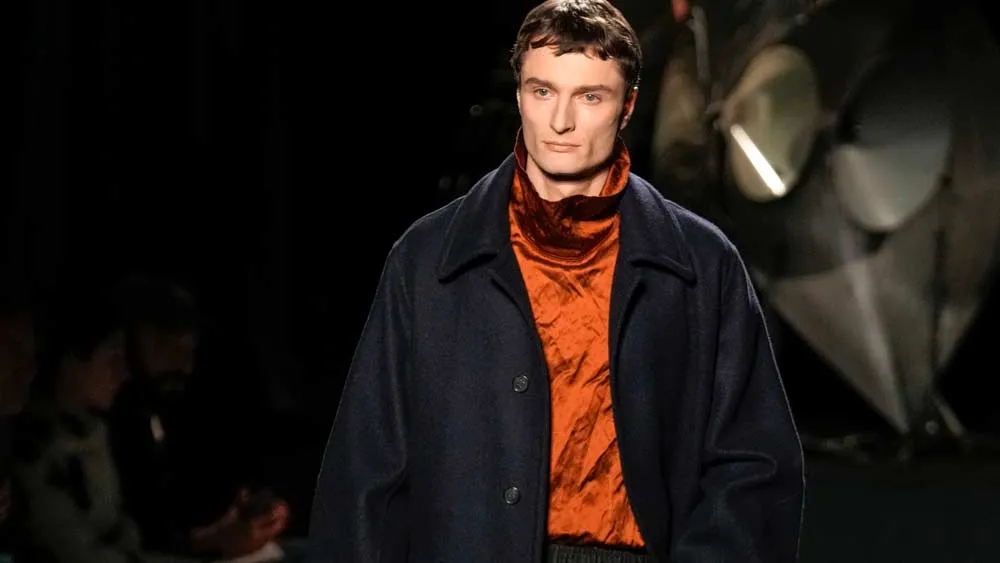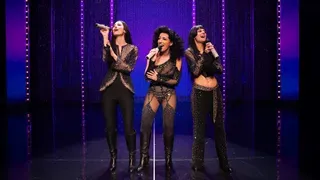September 1, 2021
Watch: 'RuPaul's Drag Race' and Lip-Syncing: Why a Once Controversial Practice is No Longer Taboo
READ TIME: 4 MIN.
This article is republished from The Conversation.
Sadie Hochman-Ruiz, University of Victoria
RuPaul's Drag Race, a reality TV drag competition, was first broadcast in 2009 to a niche audience – but the show's unceremonious start is a distant memory. Drag Race is currently filming its 14th season and has yielded several spinoffs. On Sept. 2, RuPaul's Drag Race All Stars Season 6 will crown its sixth all-star.
Drag Race's climb to cultural relevance has brought many controversies. RuPaul revealed his ranch in Wyoming is used for fracking and has been accused of transphobic hiring practices – though quickly apologized. Former contestants have revealed how expensive it is to take part, while others have made the show's contract public – including how much the contestants are paid as well as financial penalties.
Lip-syncing plays an important role in building a collective identity for the queer community. The meaning attached to certain songs when lip-synced at a drag show can create solidarity within the queer community and also educate heterosexual outsiders about queer life. Even though the lip-sync is a critical part of the Drag Race competition, many fans are unaware of how recently it was introduced into drag culture – a feminist history, or "herstory," of drag performance and recorded sound reveals how controversial lip-syncing once was.
Drag "herstory"
Drag Race's version of drag performance is highly specific. It is taken mostly from New York City's ball culture of the late 1980s. In ball culture, contestants walk the runway in categories like "butch queen" and "femme realness," showcasing their most authentic and innovative outfits. Most of RuPaul's catchphrases are references to famous ball participants (Xtravaganza!) and ball-specific slang (Work!).
But the art of drag has been around for decades, even centuries. For some, it traces back to male cross-dressing during 16th century British Renaissance theatre. For others, drag comes from American variety entertainment in the late 19th to early 20th centuries, alongside vaudeville and minstrel shows.
Julian Eltinge was the reigning female impersonator of the vaudeville stage. His act included a transformation from male to female and a dance number complete with chorus line and elegant costumes.
"Lip-sync for your life"
Drag's evolution into its modern form did not stop there. Today, drag is synonymous with lip-syncing. In no small part, this is thanks to Drag Race's catch phrase: "lip-sync for your life!"
Viewers may not realize how recently lip-syncing became a drag staple.
It is unclear who was first to lip-sync. Some suggest the first lip-syncs were in short music videos produced for video jukeboxes in the 1940s, while art forms similar to lip-syncing like ventriloquism have centuries of history. How we define lip-syncing is important when narrowing this history.
The modern understanding of lip-syncing is tied to recorded sound, amplification and live performance. Drag performers could not lip-sync before the cultural takeover of recorded sound.
The early days of recorded sound came at the end of the American variety show, with cheap movie tickets and the rise of broadcast radio drawing audiences away from live performance. It was not until the 1930s and the rise of talking pictures when theatres began to be wired for sound.
Before theaters had their electronic revolution, the most skilled female impersonators, like Herbert Clifton and Francis Leon, would sing to a live band.
Recorded sound caused commotion from the moment it was introduced into American popular culture. Gesturing as a form of enhanced listening (like lip-syncing, air guitar, head-banging) has long been treated as evidence of hysteria or insanity. Listeners to early phonographs were ridiculed for conducting along with orchestras, and for men, being moved by "domestic technologies" – like the phonograph – was controversial because they had always been seen as feminine.
In the 1960s, rock music developed a phobia of commercialism and anything that disrupted direct communication to an audience – lip-syncing did just that. To be called commercial was especially damning for pop groups with mostly female audiences, like The Monkees. The band was often ridiculed for their lack of artistic freedom because they lip-synced during their televised programs.
Then there are artists like Milli Vanilli, who had their 1990 Grammy for Best New Artist rescinded after it was revealed hired performers sang on their record.
The 'record act'
Drag communities have always hosted a diversity of gender identities and the relationship between them has often been tense.
American anthropologist Esther Newton details the complicated reception of the first drag "record acts" – an older term for a lip-sync. At first, the record act was considered the laziest and most unprofessional thing a performer could do. Many senior performers criticized younger ones, especially those who might be transgender, if they didn't come up with a more traditional act.
As we wait for the finalists of Drag Race All Stars Season 6 to "lip-sync for their legacy!" what can we learn from the herstory of lip-syncing in drag? Since lip-syncing is no longer taboo, do modern drag audiences have a different idea of what makes a performer a professional? Maybe.
There are other possibilities to explain this change. Elizabeth Eva Leach suggests the Spice Girls avoided some backlash from lip-syncing because of their "ordinariness." In being ordinary, they connected directly to their audience, who too were lip-syncing and dancing at home. Another possibility, apps like TikTok have normalized mimed performance to prerecorded sound.
What is certain is that we are living in a new era of drag and "Drag Race" is leading the way.![]()
Sadie Hochman-Ruiz, Postdoctoral Fellow, Trans+ People in Forced Labour Project, University of Victoria
This article is republished from The Conversation under a Creative Commons license. Read the original article.




